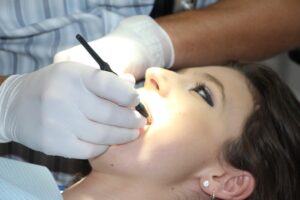A captivating smile not only enhances appearance but also signifies good oral health. However, not all smiles are flawless. Dental misalignment, crowding, or malocclusion, where upper and lower teeth fail to meet when the mouth is closed, can detract from oral health and overall well-being. Orthognathic surgery offers a viable solution for improving tooth alignment and occlusion.
Understanding Tooth Alignment Improvement
Dental misalignment and malocclusion are prevalent issues that can significantly impact oral health and quality of life. Various factors contribute to these problems, including genetic predisposition, abnormal jaw development, or childhood habits like thumb sucking or prolonged pacifier use. When teeth are misaligned or the bite is irregular, individuals may experience speech and chewing difficulties, jaw pain, headaches, and increased risk of dental problems such as gingivitis and periodontitis. Moreover, these issues can affect self-esteem and confidence, hindering social interactions.
While orthodontic treatments like braces or clear aligners effectively address mild to moderate cases of misalignment, severe conditions often necessitate orthognathic surgery. Only a qualified maxillofacial surgeon can determine the most suitable treatment based on individual needs and severity of the condition.
The Role of Orthognathic Surgery
Orthognathic surgery aims to correct severe dental and skeletal alignment issues in the mandible and maxilla, offering lasting improvements in tooth alignment and occlusion. The surgical process commences with a comprehensive evaluation, including 3D scans to assess the unique bone and tooth structure of each patient.
Once orthognathic surgery is deemed necessary and beneficial, the surgeon devises a personalized treatment plan. Precise cuts are made in the jaw bones, allowing for controlled movement to achieve proper alignment. Titanium plates and screws are utilized to stabilize the bones in their new position.
Post-operative Care and Recovery
Recovery from orthognathic surgery may span several weeks, during which adherence to post-operative instructions and regular follow-up appointments are crucial. This ensures a smooth recovery process and optimal outcomes. With orthognathic surgery, patients experience improved masticatory and respiratory functions, enhancing both physical and emotional well-being, and restoring a natural, confident smile.
Conclusion
At Birbe Clinic, our experienced team specializes in orthognathic surgery, offering personalized care to address dental and skeletal alignment issues. If you seek to enhance your tooth alignment and occlusion, we are here to assist you. For inquiries or appointments, please contact us at +34 932 124 737, via WhatsApp at +34 626 852 363, or email us at clinica@birbe.org.
Article written by the Birbe Editorial Committee



